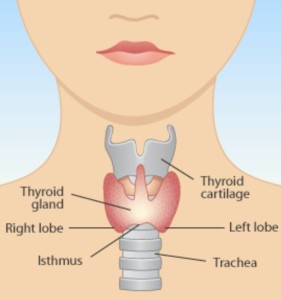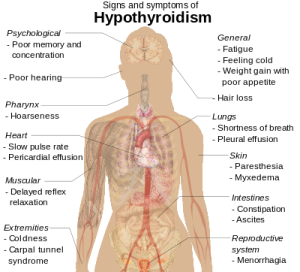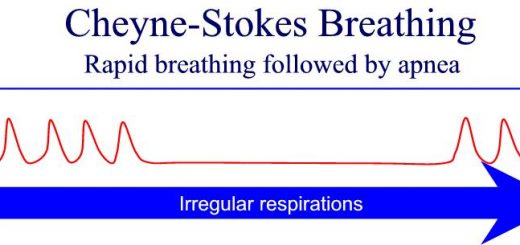Hypothyroidism – a first aid guide
What is the thyroid gland?
The thyroid gland is a butterfly shaped endocrine gland that is normally located in the lower front of the neck. Thyroid hormones are produced by the thyroid gland.
This gland is located in the lower part of the neck, below the Adam’s apple. The gland wraps around the trachea (windpipe) and has a shape that is similar to a butterfly – formed by two lobes (wings) and attached by a middle part (isthmus).
The thyroid gland uses iodine (mostly available from the diet in foods such as seafood, bread, and salt) to produce thyroid hormones. The two most important thyroid hormones are thyroxine (T4) and triiodothyronine (T3), which account for 99.9 per cent and 0.1 per cent of thyroid hormones present in the blood respectively.
However, the hormone with the most biological activity is T3, once released from the thyroid gland into the blood, a large amount of T4 is converted into T3, which is the active hormone that affects the metabolism of cells.
Thyroid hormone is carried through the blood to every tissue in the body, where it is essential to help each cell and organ to work correctly, for example, thyroid hormone helps the body use energy, stay warm, and keep the brain, heart, muscles, and other organs working as they should.
What is hypothyroidism?
Hypothyroidism is an underactive thyroid gland. Hypothyroidism means that the thyroid gland cannot make enough thyroid hormone to keep the body running normally. People are hypothyroid if they have too little thyroid hormone in their blood.
Low thyroid hormone levels cause the body’s functions to slow down, leading to general symptoms like dry skin, fatigue, loss of energy, and memory problems.
What are the causes of hypothyroidism?
There can be many reasons why the cells in the thyroid gland can not make sufficient thyroid hormone. Some of the more common causes of hypothyroidism are:
Auto-immune disease: This is the most common cause of thyroid gland failure, the immune system accidentally attacks cells in the thyroid gland, interfering with their ability to make thyroid hormone. When enough thyroid cells have been destroyed, too few are left to meet the body’s need for thyroid hormone;
Surgery: Some people with thyroid nodules, thyroid cancer, or Graves’ disease need to have part or all of their thyroid removed. If the whole thyroid is removed, people will definitely become hypothyroid. If only part of the thyroid is removed, the remaining part may either provide sufficient hormone and work well enough to keep thyroid hormone blood levels normal throughout the person’s life, make insufficient thyroid hormone to keep blood levels normal or initially make enough thyroid hormone, but later become unable to meet the body’s demand;
Radiation therapy: Patients treated with radiation therapy can lose part or all of their thyroid function;
Congenital hypothyroidism: Some babies are born without a thyroid or with a poorly functioning thyroid;
Thyroiditis: Thyroiditis is an inflammation of the thyroid gland, usually caused by an autoimmune attack or by a viral infection. Thyroiditis can make the thyroid release its entire supply of stored thyroid hormone into the blood at once, causing brief hyperthyroidism; once all of the stored hormone has been released, the thyroid becomes underactive.
Insufficient iodine: The thyroid gland must have iodine to make thyroid hormone. Iodine comes into the body in foods, includ- ing dairy products, chicken, fish, and salt.
What are the signs and symptoms of hypothyroidism?
The symptoms of hypothyroidism are often subtle. They are not specific and are often attributed to aging. Patients with mild hypothyroidism may have no signs or symptoms.
The symptoms generally become more obvious as the condition worsens and the majority of these complaints are related to a metabolic slowing of the body.
Common symptoms are:
- Fatigue and weakness;
- Depression;
- Modest weight gain and difficulty losing weig
ht;
- Cold intolerance;
- Excessive sleepiness;
- Dry, coarse hair and hair loss;
- Constipation;
- Dry, rough pale skin;
- Muscle cramps;
- Irritability;
- Increased cholesterol levels;
- Decreased concentration and memory loss;
- General aches and pains;
- Swelling of the legs;
- Abnormal menstrual cycles.
- Decreased libido.
Most will have a combination of a number of these symptoms. Occasionally, some patients with hypothyroidism have no symptoms at all, or they are just so subtle that they go unnoticed.







